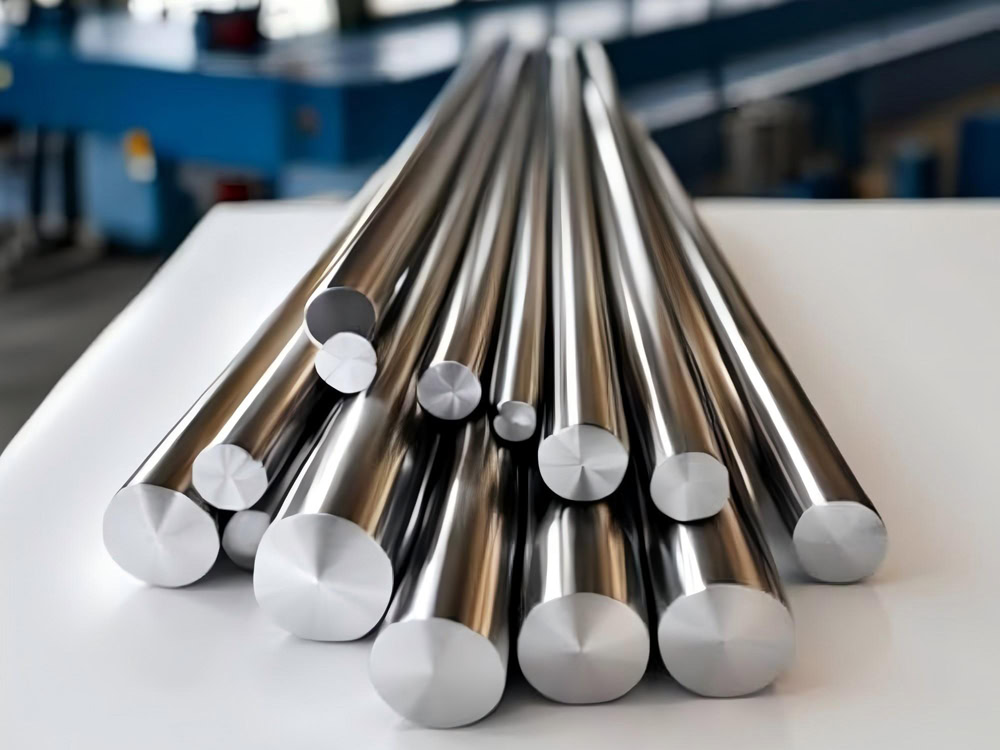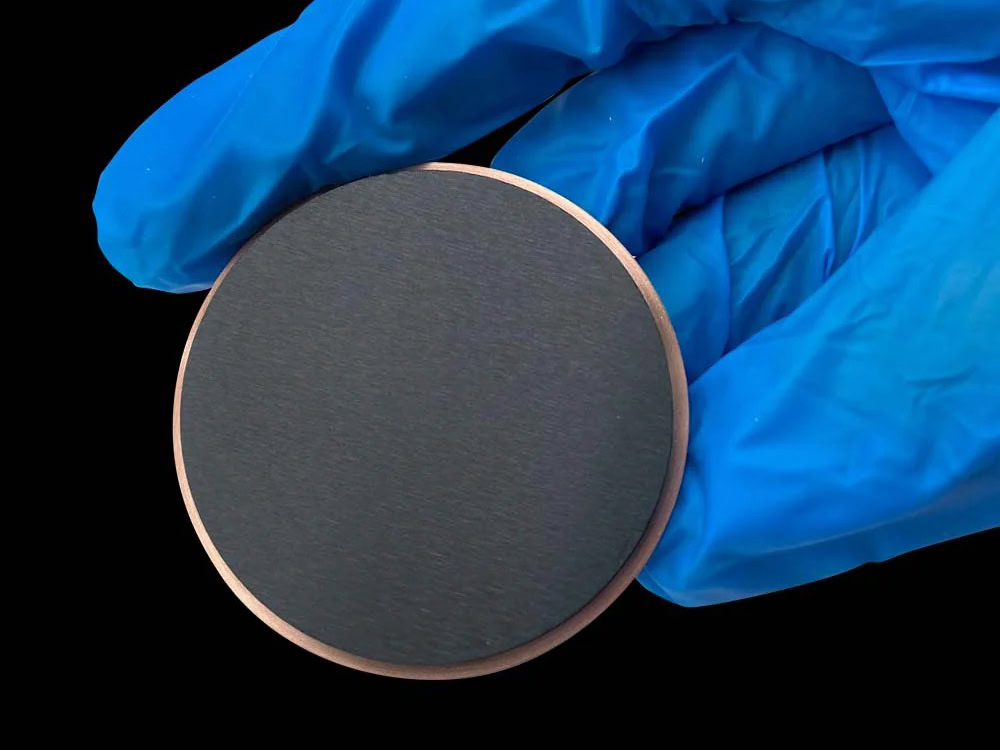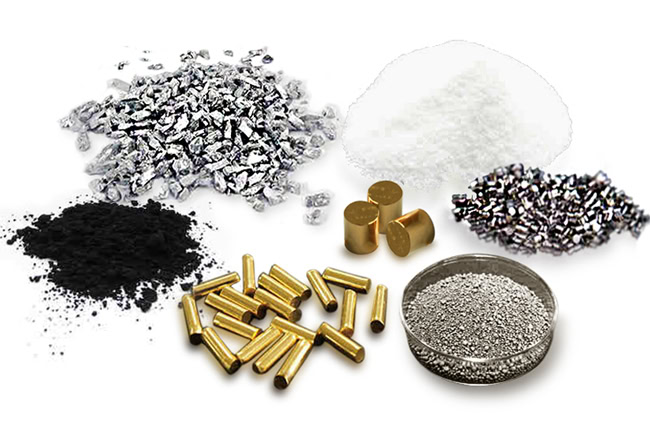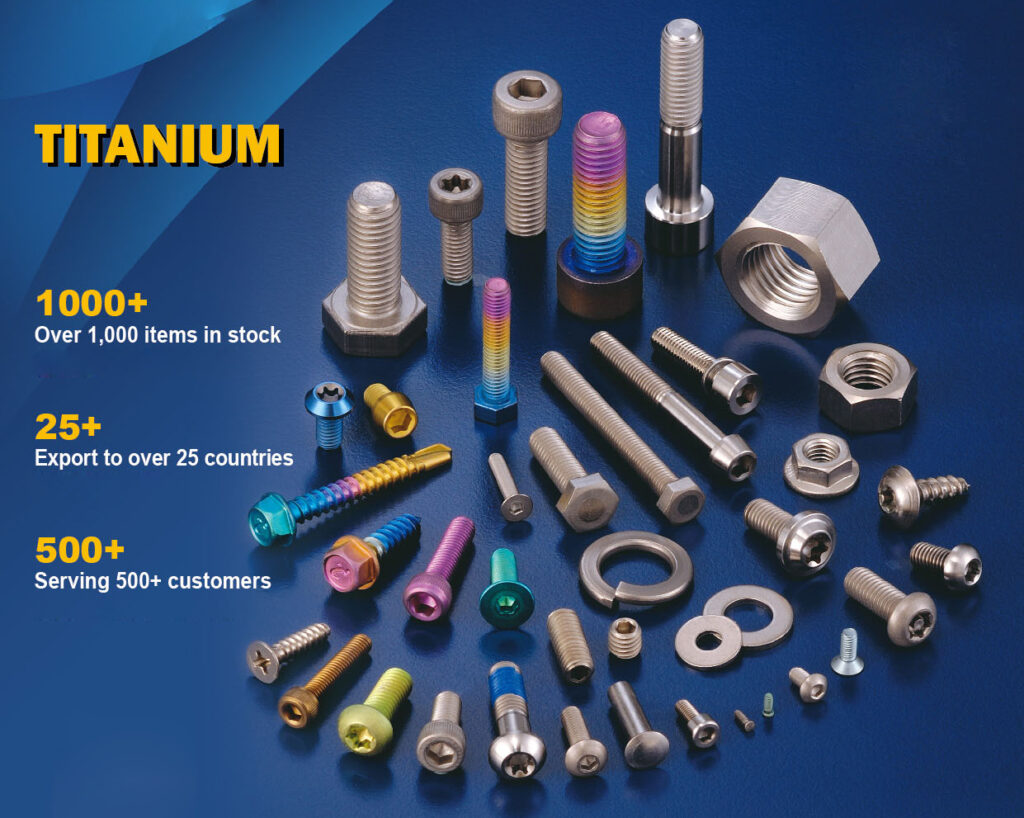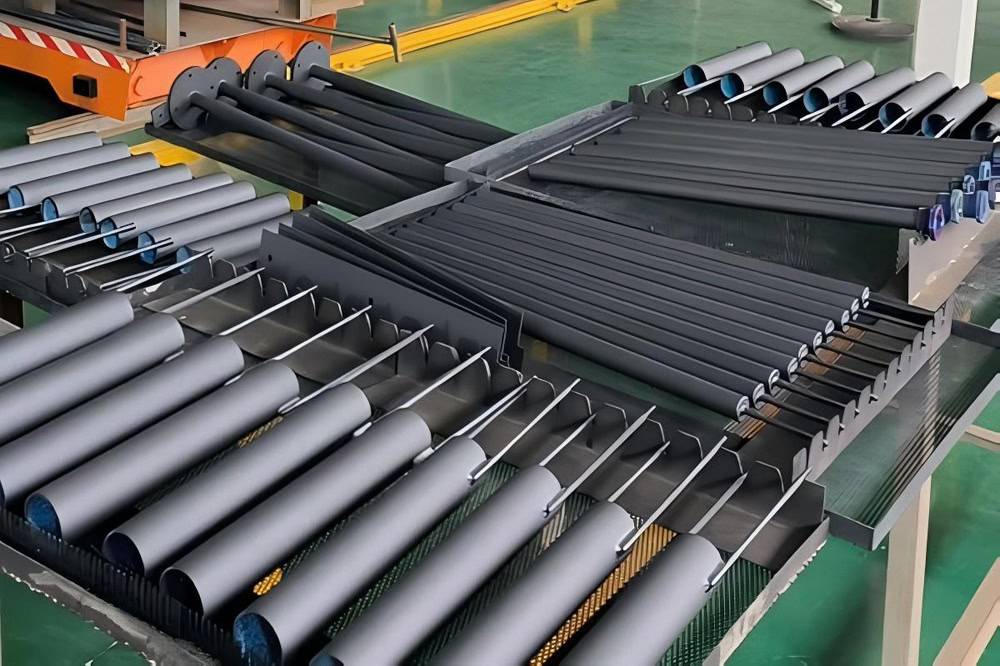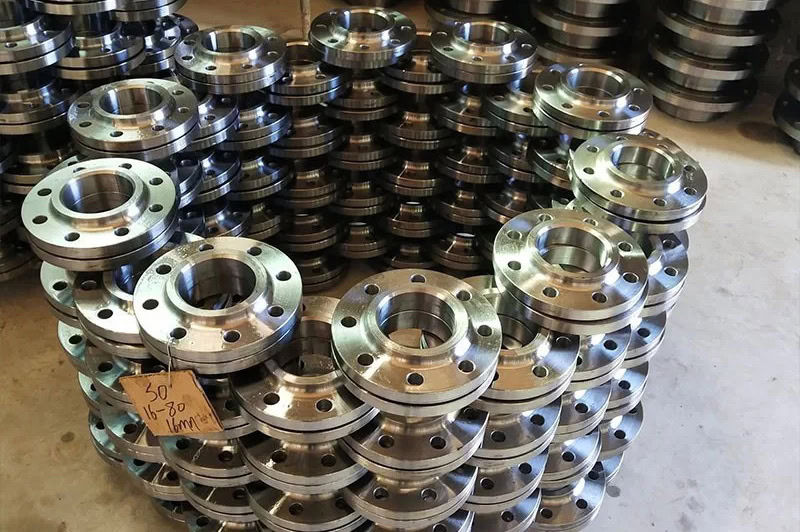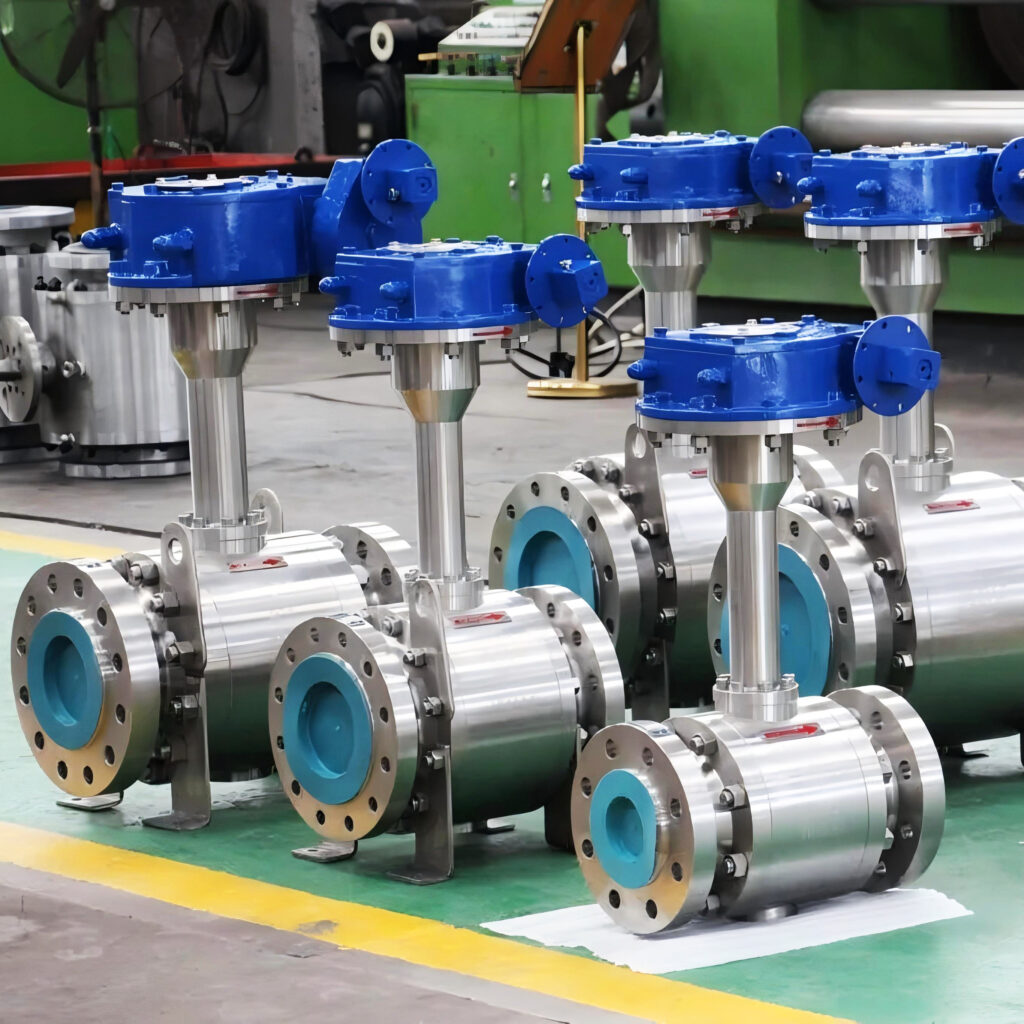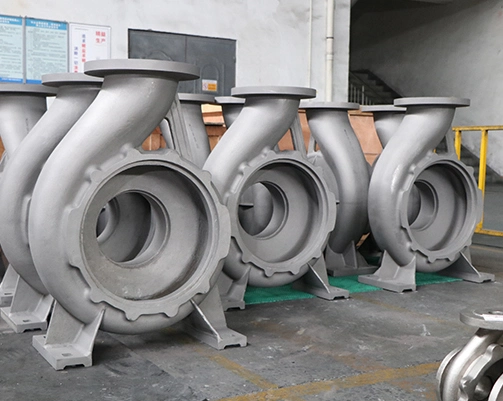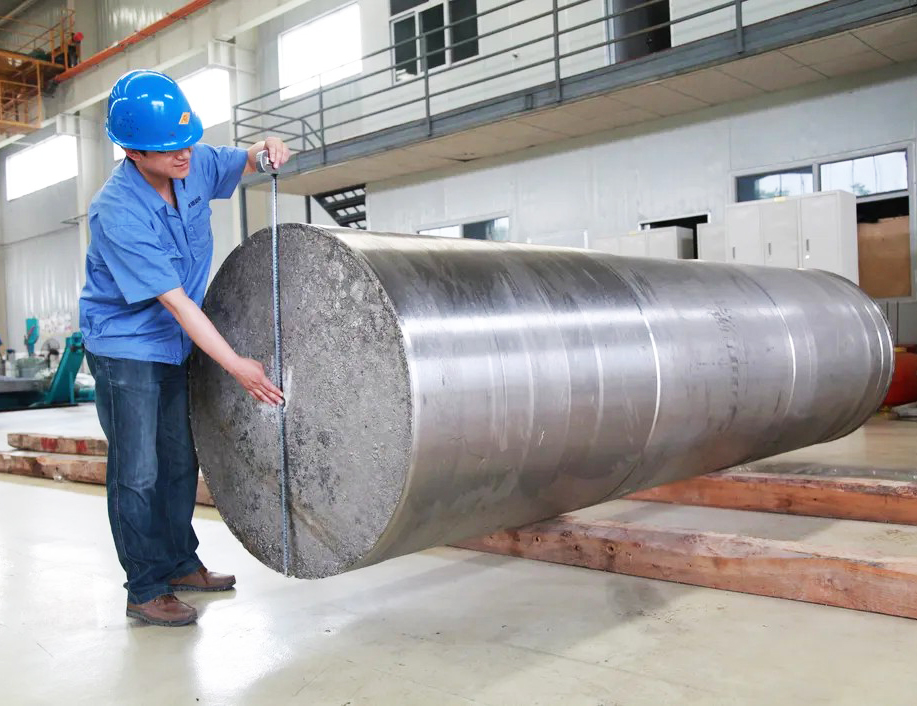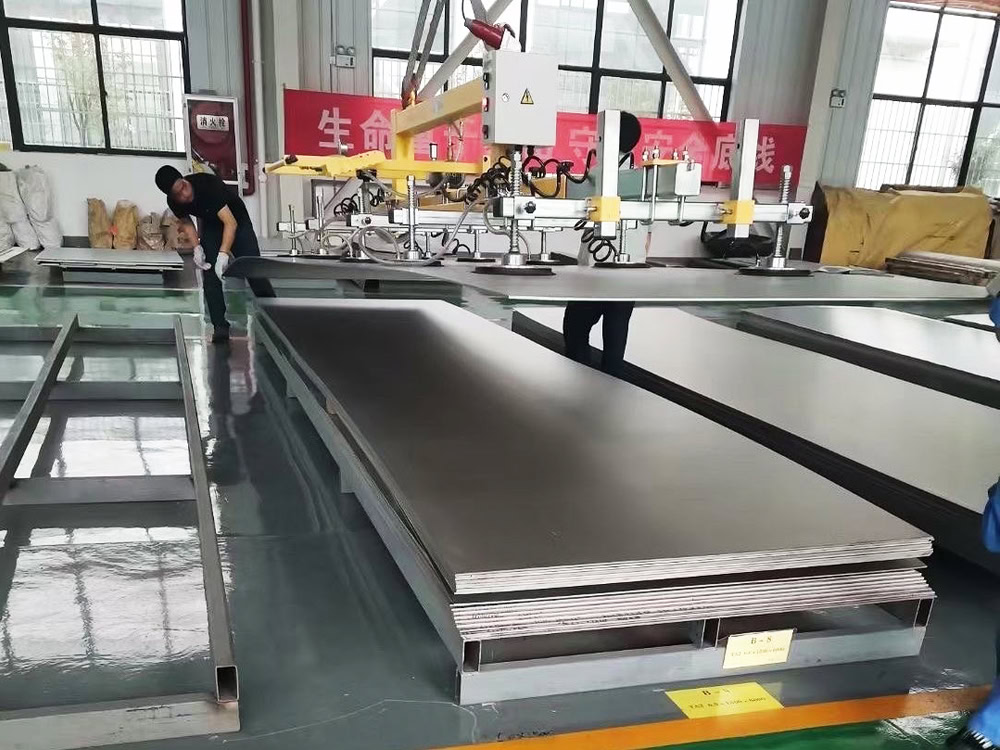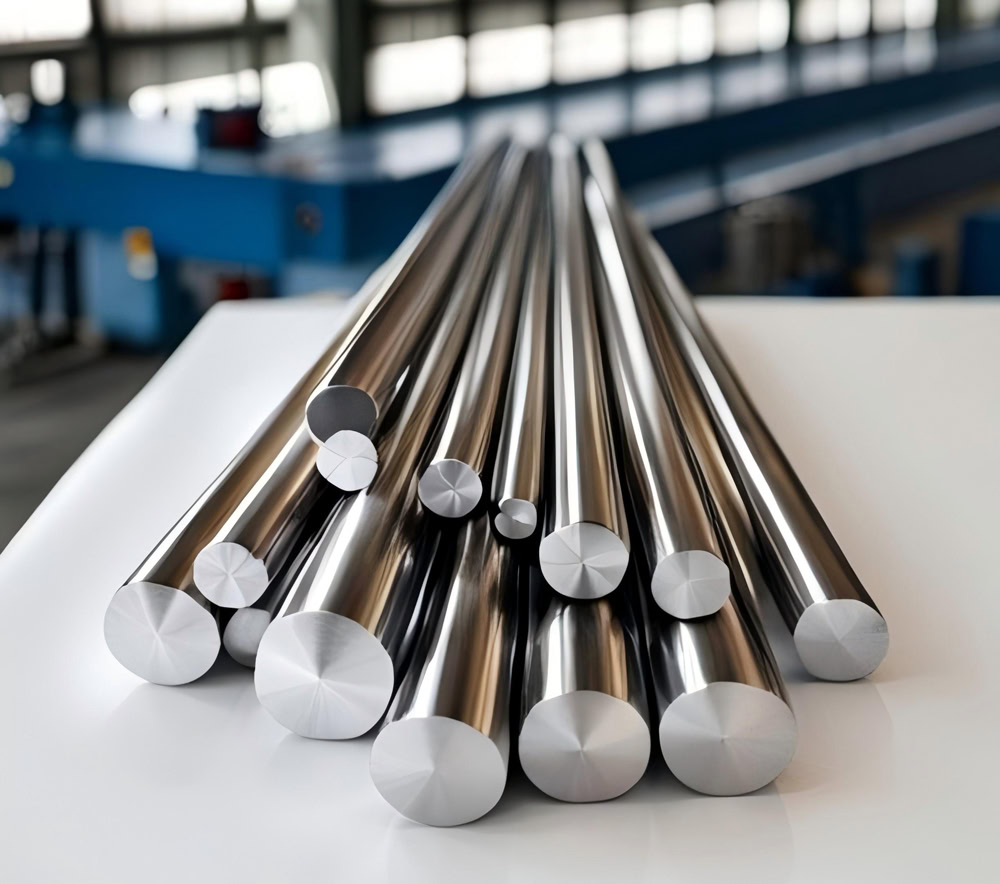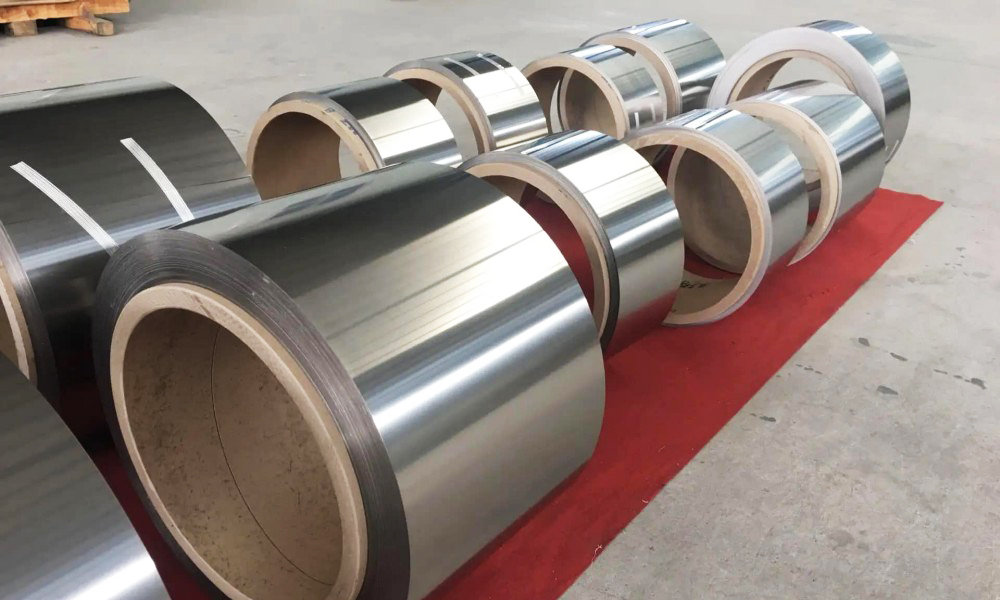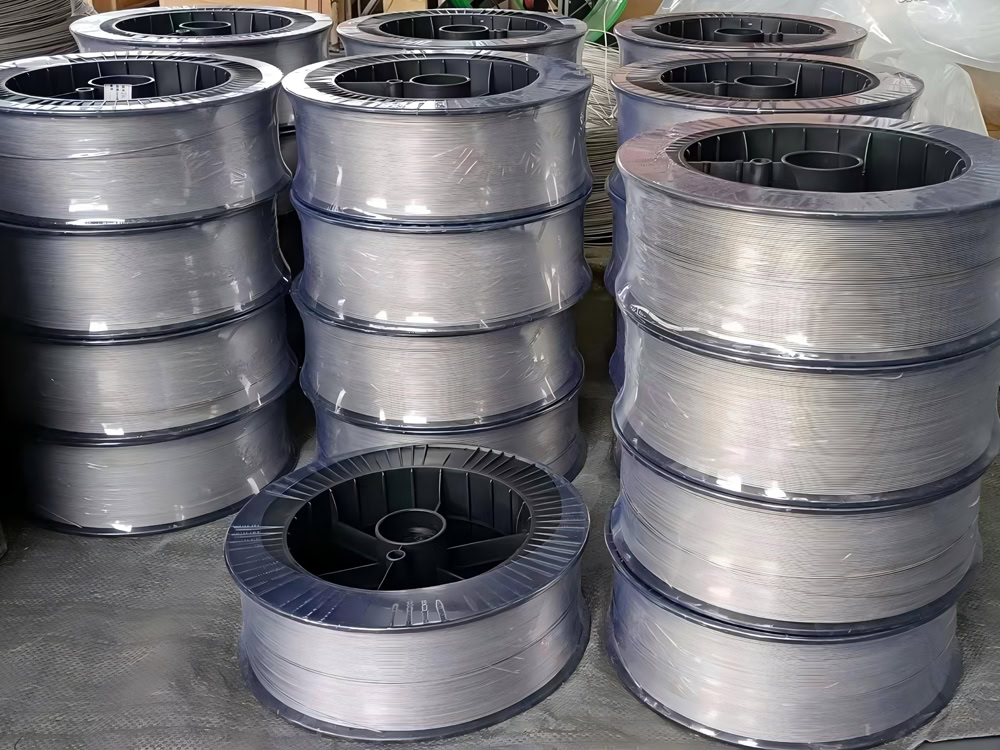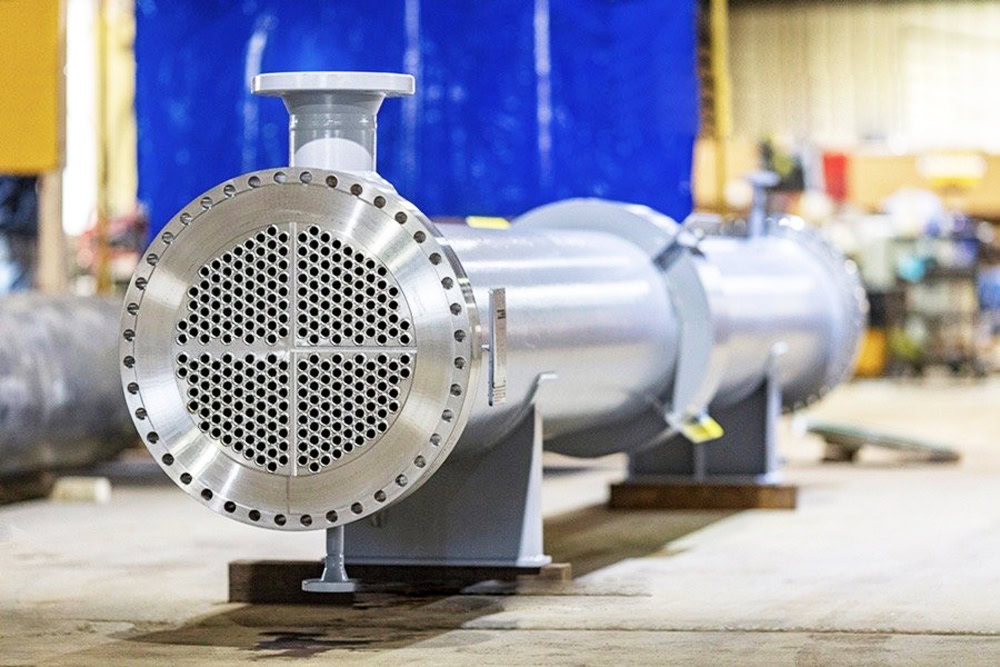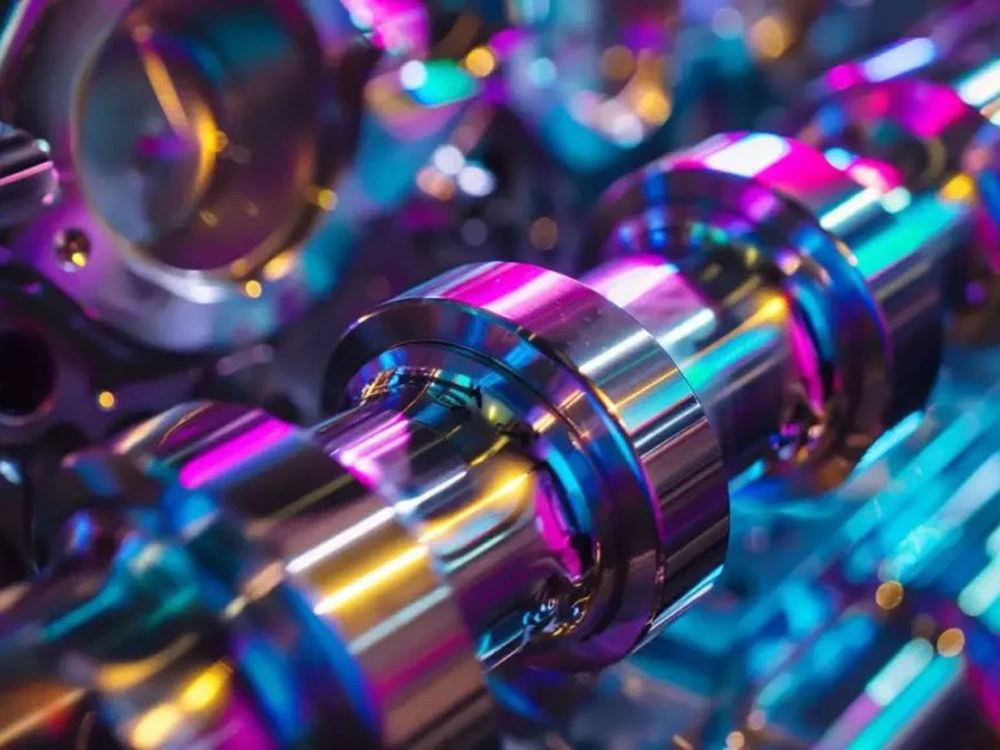Titanium and titanium alloys are widely used in aerospace, chemical industry, medical treatment, marine engineering, etc. due to their excellent properties, such as high strength, low density, good corrosion resistance, high temperature stability, etc. The cost of titanium rods has always been one of the key factors restricting their wider application. An in-depth comparison of the cost of titanium rods in China and the United States will not only help you make more scientific and reasonable choices in purchasing and decision-making.
Table of Contents
ToggleTitanium rod manufacturing technology
Titanium sponge is the basic raw material for manufacturing titanium rods, which has a fundamental impact on the cost of titanium rods. At present, the mainstream method for producing titanium sponge in the world is magnesium thermal reduction (Claure process). The chlorination method is used to convert titanium concentrate into titanium tetrachloride (TiCl₄). Then, under high temperature and inert gas protection, magnesium (Mg) is used to reduce TiCl₄ to produce titanium sponge and magnesium chloride (MgCl₂).
Titanium Ingot Smelting
The smelting from titanium sponge to titanium ingot is the key to determining the quality and cost of titanium rods. Common smelting methods include vacuum consumable arc melting (VAR), electron beam cold hearth furnace melting (EBCHM), etc. Vacuum consumable arc melting is currently the most widely used. Sponge titanium is made into a consumable electrode, and the high temperature generated by arc discharge is used to melt the consumable electrode in a vacuum environment, and the molten droplets are solidified in a water-cooled copper crucible to form a titanium ingot. For titanium ingots used in high-end fields such as aerospace, more than 3 smeltings may be required, which undoubtedly increases the cost.
Electron beam cold bed furnace melting is a relatively new melting technology. In the electron beam cold bed furnace, the high-energy electron beam emitted by the electron gun bombards the titanium sponge, causing it to melt on the water-cooled copper cold bed. Impurities in the molten pool will float to the surface and be removed due to density differences, thereby obtaining a high-purity, uniform titanium ingot. However, its equipment investment is huge and the operating cost is high. It is currently mainly used in high-end fields that require extremely high quality of titanium ingots, such as titanium alloys for aerospace.
Titanium Rod Forming
After the titanium ingot is smelted, it needs to go through a series of processes to make a titanium rod that meets the requirements of use. Common technologies include forging, rolling, extrusion, etc. Forging is a process of applying pressure to plastically deform the titanium ingot to obtain the desired shape and properties. In forging, the titanium ingot is repeatedly upset and stretched at high temperature. By controlling the forging ratio and deformation temperature, the grains are refined and the mechanical properties of the titanium rod are improved. Forging is suitable for manufacturing titanium bars with large specifications, complex shapes or high performance requirements, but its production efficiency is relatively low, the cost is high, and the technical level of equipment and operators is high.
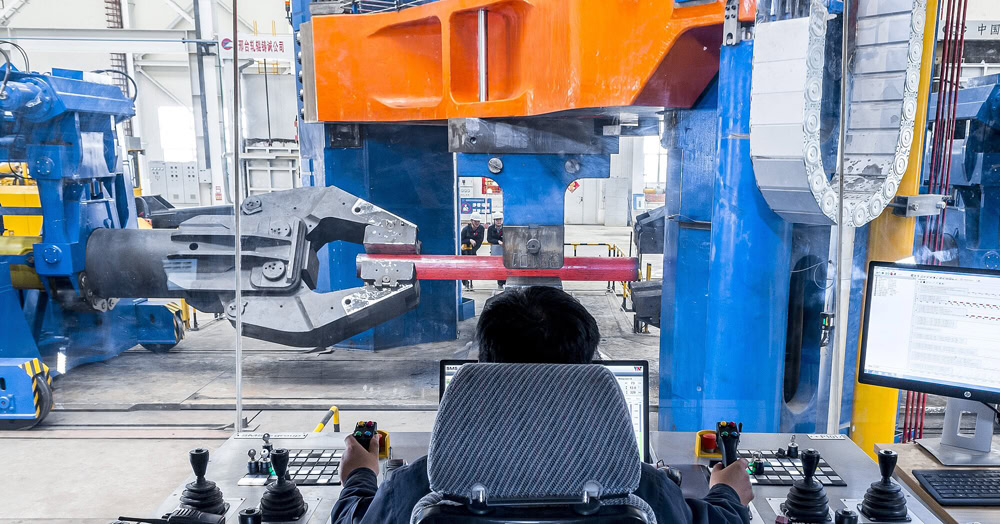
Rolling is to continuously roll the titanium ingot through the rolling mill to gradually deform it into a titanium bar of the required specifications. Rolling has the advantages of high efficiency and relatively low cost. It can produce titanium bars with high dimensional accuracy and good surface quality, which is suitable for large-scale production. According to the rolling temperature, it can be divided into hot rolling and cold rolling. Hot rolling is usually used to open the titanium ingot and produce larger titanium bars, while cold rolling is mainly used to further improve the dimensional accuracy and surface quality of titanium bars.
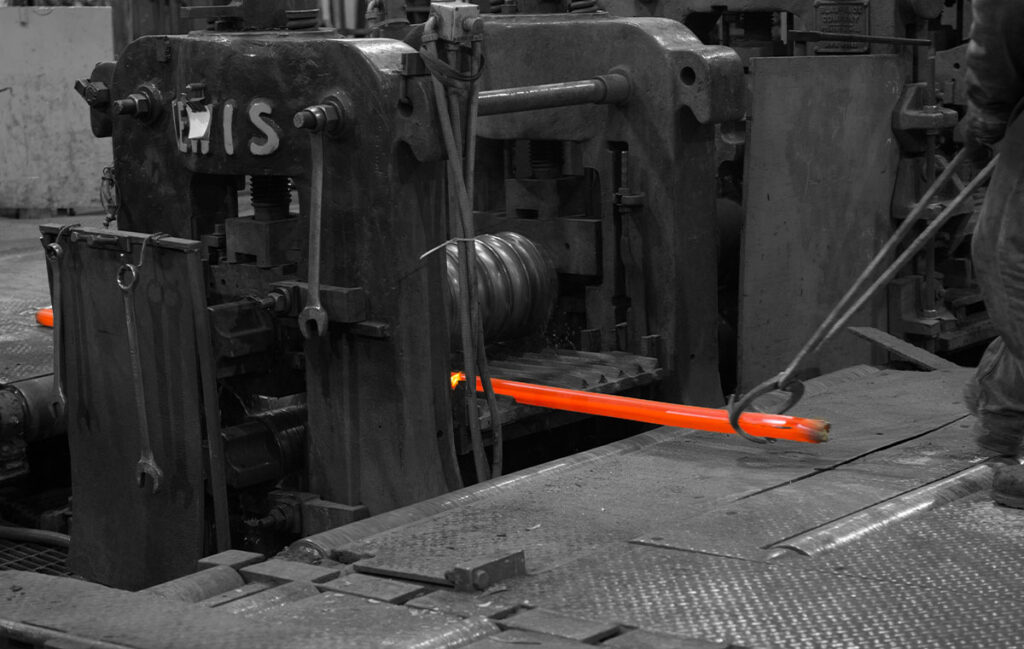
In the forming of titanium bars, a series of auxiliary processes are also required, such as heat treatment and surface treatment. Heat treatment can adjust the organizational structure and performance of titanium bars by controlling the heating temperature, insulation time and cooling rate, so that it can meet different use requirements. Surface treatment can improve the corrosion resistance, wear resistance and appearance quality of titanium bars. Common surface treatment methods include pickling, passivation, electroplating, spraying, etc.
China Titanium Rod Cost Analysis
China is the world’s largest producer of titanium sponge, which makes the price of titanium sponge in China relatively stable and has certain cost advantages. According to market data, the price of first-level titanium sponge in China has generally remained at around 50,000-60,000 yuan/ton in recent years. For example, in 2024, some companies have achieved a titanium sponge cost of less than 40,000 yuan/ton, which provides a relatively cheap raw material basis for the production of titanium rods in China. In addition to titanium sponge, some other auxiliary materials are also required, such as electrode materials (during the smelting process), lubricants (during the processing and forming process), and protective gases (during the smelting and processing process). The cost of these auxiliary materials is relatively small compared to titanium sponge, but it will also have a certain impact on the total cost of titanium rods.
Energy Cost
The manufacture of titanium rods is a high-energy consumption process. From the production of titanium sponge to titanium rods, each link requires a lot of energy. Taking 2024 as an example, China’s industrial electricity price is generally 0.4-0.7 yuan/kWh. According to statistics, energy costs account for about 15% – 25% of the cost of each ton of titanium rod.
Labor Costs
China has abundant labor resources. However, with the development of China’s economy and changes in the labor market structure, labor costs have also been rising in recent years. The monthly salary of workers is 4,000 – 8,000 yuan. The salary level of technicians and managers is relatively high, generally above 8,000 yuan, and the salary of some senior technical talents and managers is even higher. The proportion of labor costs in the cost of titanium rods is generally around 10% – 20%. For example, some large titanium industry groups in Baoji area, Wstitanium invested in advanced automation equipment and management models, which effectively reduced the proportion of labor costs in total costs and improved efficiency and product competitiveness.
Equipment Cost
The manufacture of titanium rods requires a series of professional equipment, from titanium sponge production equipment (such as chlorination furnace, reduction distillation furnace, etc.), titanium ingot smelting equipment (such as vacuum consumable arc furnace, electron beam cooling furnace, etc.) to titanium rod forming equipment (such as forging press, rolling mill, extruder, etc.), the purchase cost of these equipment is high. For example, the price of a medium-sized vacuum consumable arc furnace may range from several million yuan to tens of millions of yuan, while the price of an advanced electron beam cooling furnace equipment may be as high as tens of millions of yuan. In addition, it is also necessary to equip corresponding auxiliary equipment and testing equipment, such as heat treatment furnace, surface treatment equipment, spectrometer, mechanical properties testing equipment, etc., and the investment of these equipment also further increases the company’s fixed asset investment. The depreciation cost of equipment is an important part of the production cost of titanium rods. The depreciation period of large-scale production equipment is about 10-15 years, and the depreciation period of small equipment and auxiliary equipment is about 5-10 years. The depreciation cost of equipment accounts for about 10%-15% of the production cost of each ton of titanium rods.
Production scale and cost advantage
China has a huge titanium industry scale, and many titanium rod production enterprises have formed an industrial cluster effect. For example, Baoji, Shaanxi, is known as the “China Titanium Valley”, which gathers a large number of titanium and titanium alloy enterprises. Large-scale production gives enterprises obvious cost advantages in raw material procurement, equipment utilization, and technology research and development. In terms of raw material procurement, large enterprises or industrial clusters can obtain more favorable prices and better supply conditions through centralized procurement, reducing the cost of raw material procurement; in terms of equipment utilization, large-scale production can improve the utilization rate of equipment and reduce the equipment depreciation cost per unit product. The economy of scale has been achieved, which has reduced the production cost of titanium rods per ton by about 10%-20% compared with small enterprises.
Cost of titanium rods in the United States
The production capacity of titanium sponge in the United States is relatively limited, and most of the titanium sponge is imported, with the main import sources including Russia, China and other countries. Since the price of titanium sponge in the international market is affected by various factors such as global supply and demand, trade policies, etc., American companies face greater price fluctuation risks in the purchase of titanium sponge. In addition, imported titanium sponge also requires additional costs such as tariffs and transportation costs, which further increases the raw material procurement costs of titanium rod manufacturers in the United States. According to market data, the landed price of titanium sponge imported by American companies is generally about 10% – 20% higher than the domestic market price in China. After adding tariffs and other fees, the cost gap may be even greater.
Labor costs
The United States is a country with high wages and high welfare, and its labor costs are significantly higher than those in China. The wages of American workers, technicians and managers are generally high, and coupled with a sound social security system and employee welfare system, labor costs account for a large proportion of the cost of titanium rods. According to statistics, the labor cost of titanium rods in the United States generally accounts for about 30%-40% of the total cost, which is 2-3 times that of China. For example, the average hourly wage of front-line workers in the United States may reach US$20-30, while the wages of technicians and managers are even higher. The high labor costs have a certain impact on the price competitiveness of American titanium rods in the international market.
Equipment and R&D costs
The United States has always been at the world’s leading level in titanium rod production equipment and technology research and development, with advanced smelting, processing and testing equipment. American companies have invested heavily in equipment purchases, pursuing high performance and automation of equipment to improve production efficiency and product quality. For example, the advanced electron beam cold bed furnace melting equipment used by some American companies has a very high level of automation control and production accuracy, but the equipment price is also extremely expensive, which makes the equipment depreciation cost account for a high proportion of the titanium rod production cost, generally around 15% – 20%.
Market and operating costs
The market environment and operating model in the United States are quite different from those in China. In terms of marketing, American companies need to invest a lot of money in brand building, market promotion and customer service to increase product awareness and market share. The advertising and marketing channel costs in the United States are relatively high, generally around 10% – 15%. In addition, the financial system and tax policies of the United States also have an impact on corporate costs. The financing costs and tax burdens of enterprises are relatively heavy, which further increases the total cost of titanium rods.
Comparison of titanium rod costs - China Vs. United States
Taking all the above factors into consideration, on the whole, Chinese titanium rods have obvious advantages in terms of cost. According to market research and industry data estimates, under the same specifications and quality standards, the cost of titanium rods in China is generally 20% – 40% lower than that in the United States. Comparison of costs in various links
Titanium sponge: With its huge titanium sponge production capacity and sufficient market competition, China has a significant price advantage. The price of titanium sponge in China is relatively stable and at a low level, while the United States has limited titanium sponge production capacity and relies on imports, resulting in high procurement costs. In addition to tariffs, transportation and other additional costs, the procurement cost of titanium sponge in the United States is 10% – 20% higher than that in China or even more.
Auxiliary materials: Although China and the United States are similar in the types of auxiliary materials required for titanium rod production, the United States has technical advantages in some high-end auxiliary materials, but the price is relatively high. In terms of importing ordinary auxiliary materials, it faces supply risks and additional procurement costs. In contrast, China is more flexible in the supply of auxiliary materials, and some companies can achieve domestic supply, which has more advantages in cost control, making the proportion of auxiliary material costs in China’s titanium rod production relatively lower.
Energy: The energy cost in the United States accounts for 20% – 30%, which is higher than the average level of 15% – 25% in China. This gap makes China’s titanium rods more competitive in energy costs.
Labor costs: The high wages and benefits in the United States make the labor costs of its titanium rod production enterprises account for 30% – 40% of the total cost, while the labor costs in China account for only 10% – 20%. The huge difference in labor costs has become one of the important factors that make the cost of titanium rods in China lower than that in the United States.
Equipment: American companies pursue high performance and automation of equipment, and the cost of equipment purchase is high, resulting in equipment depreciation costs accounting for 15% – 20%; although Chinese companies are also constantly improving their equipment level, the equipment investment intensity and depreciation cost ratio are relatively low, generally around 10% – 15%. However, the production efficiency and product quality advantages brought by advanced American equipment have made up for the cost disadvantage to a certain extent.
R&D: The United States has invested heavily in the research and development of the titanium industry, which has greatly increased the total cost of enterprises in the short term. Although it will help improve product competitiveness in the long run, in terms of cost comparison, the amount of R&D costs allocated to products by Chinese companies is relatively small. Chinese companies have also increased their R&D investment in recent years, but their R&D costs are still lower than those of the United States.
Summary
Through a comprehensive analysis of the costs of titanium bars in China and the United States. China has advantages in raw material supply, energy costs, labor costs, market and operation costs. The overall cost is 20% – 50% lower than that of the United States, which has strong price competitiveness in the international market, especially in the low-end and mid-end markets. Although the United States does not have an advantage in cost, it has a leading position in high-end technology research and development, advanced equipment and product quality, and can maintain competitiveness in high-end markets such as aerospace.
For Chinese titanium bar companies, they should continue to play a cost advantage in the future. At the same time, increase R&D investment, enhance technological innovation capabilities, improve product quality and performance, gradually expand to the high-end market, and enhance competitiveness in the high-end field. For the U.S. titanium bar industry, it is necessary to explore ways to reduce costs while maintaining high-end technological advantages. For example, optimize raw material procurement channels and reduce the import costs of raw materials such as sponge titanium; improve the degree of automation, strengthen cooperation with international companies, and share R&D costs.
